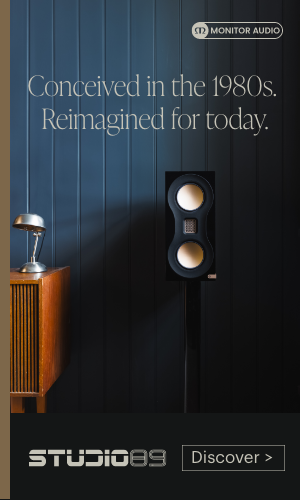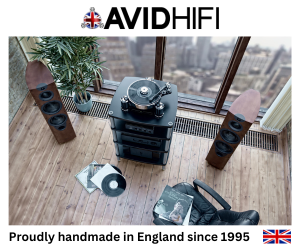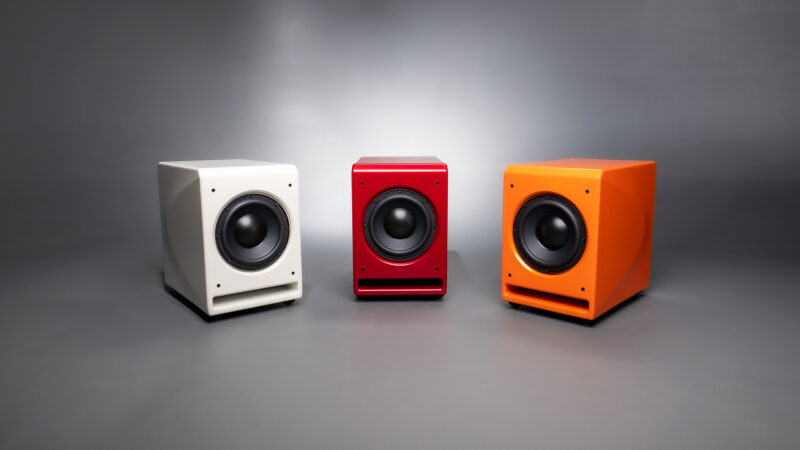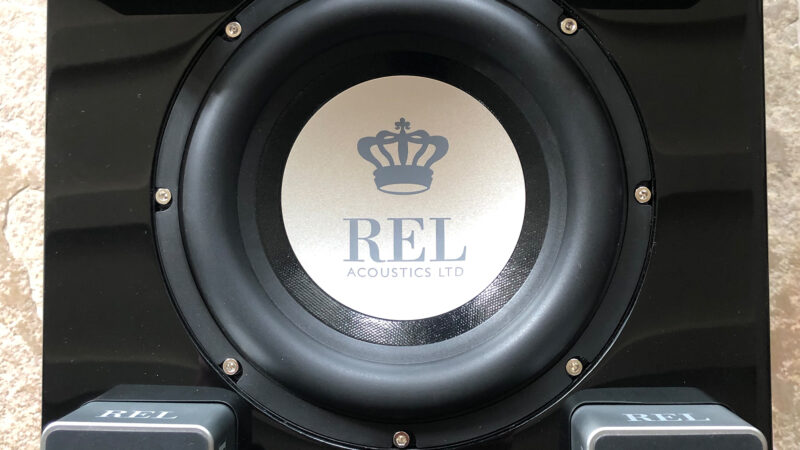A visit to this year’s bustling hifi shows reveals how the humble subwoofer has now thankfully claimed its rightful place within two channel audio, going from mere home cinema add-on to a dedicated specialist product that can enhance our music systems.
This change in perception has largely been driven by brands who are committed to the art of low frequency reproduction without compromise, adding finesse and refinement like any specialist hifi product.
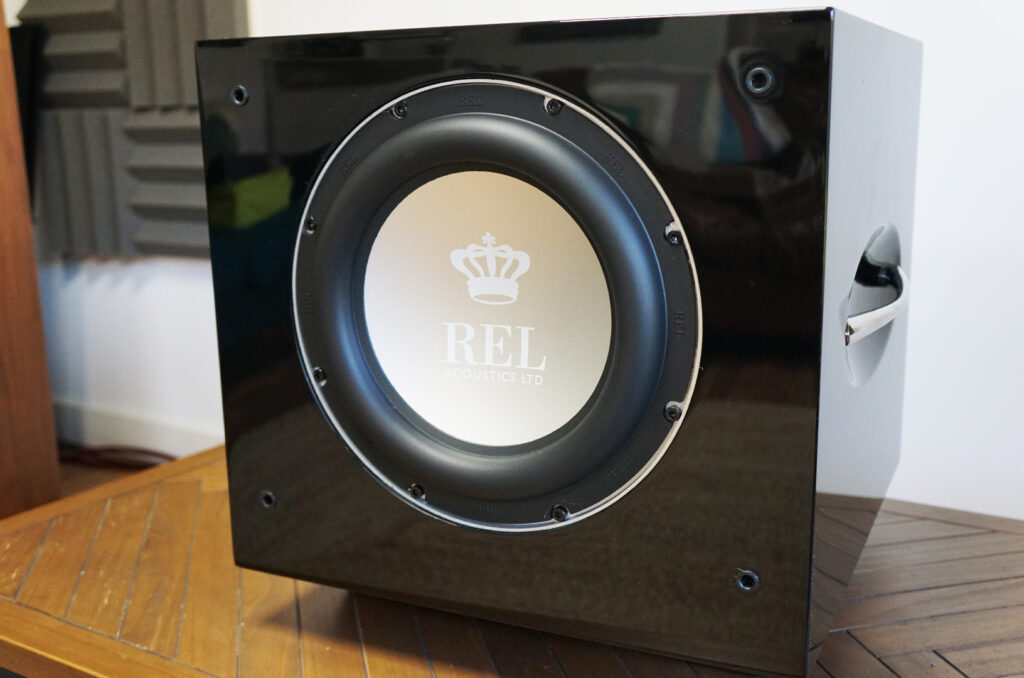
There’s no mistaking the crown logo and with its forward firing champagne silver driver, the S/510 looks purposeful yet classy. Our review sample arrived in gloss black, with a 12 layered white lacquer finish also available
REL is a company that’s flown this flag more than most, being founded in Bridgend back in 1990 by Richard Edmund Lord (hence the company name), whose dissatisfaction with the subwoofers of the day drove him to build something better. And it worked, leading to over 30 years of innovation that’s put REL on the global map.
These days REL doesn’t just build one subwoofer or indeed a series. Instead it offers dedicated ranges, stemming from the HT entry level models starting at £599 (which includes the 1205 MKII we tested last year) through to the Reference Series with £7k and up price tags.
The S models borrow heavily from these flagship subs and are the higher of the two mid-level line-ups, with the T/x range being the lower (featuring the T/5x that impressed us back in 2021).
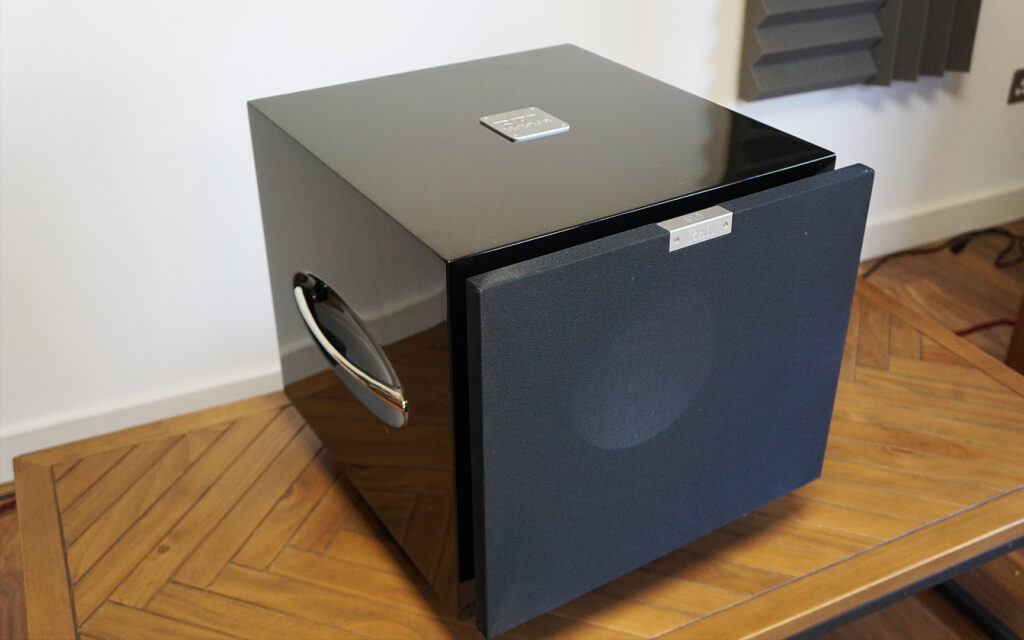
38mm thick supplied grille is better made than most, providing essential protection if needed, although the S/510 looks so much better with it removed
Ready for anything
Despite being the base model in the S Serie at £2,299 there’s nothing base about its spec sheet, with a 10″ (250mm) front-firing actively driven woofer and 12″ (300mm) passively driven radiator woofer on its underside.
The slickly branded front woofer is made from REL’s own ContinuousCast alloy that’s comprised of an alloy front skin and ultra-lightweight pure carbon fibre rear layer, to maintain a thin profile while adding strength to cope with the S/510’s long throw excursion. Alongside stiffening the cone, carbon fibre also helps to eliminate the unwanted effects of internal backwaves inside the cabinet, making sure this internal pressure is correctly channelled as intended, driving the downfiring SuperProgressive woofer.
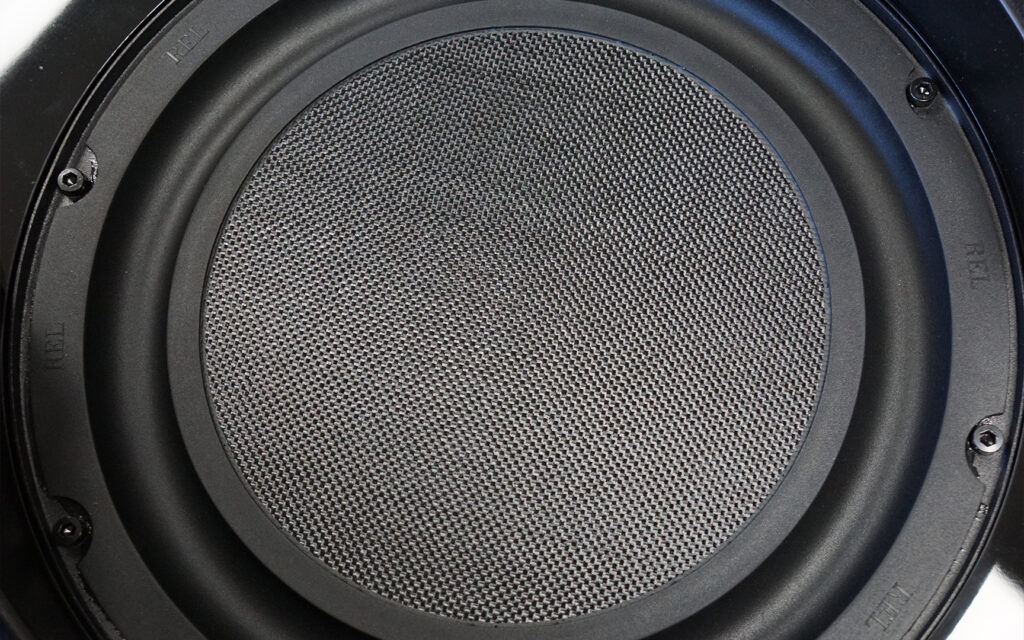
The S/510’s 12″ woven fibre passive radiator is hidden from view on the sub’s underside and looks top quality
Like a thoroughbred sports car with beefed up suspension, these drivers have been engineered to cope with plenty of power, which in the S/510’s case comes from REL’s 500W NextGen3 internal Class D amplifier. This may seem a step change from the Class A/B amps of its cheaper T range, but what it actually highlights is that like us, REL believes there’s no single ideal solution to hifi amplification, with all topologies having their own merits – it’s the execution of the approach that matters. That’s why the S/510 is intentionally designed for hi-end stereo systems, with PerfectFilter circuits for greater response at the frequency extremes, alongside PureTheatre filters to cater for home theatre soundtracks.
Crucial to the S/510 (and all of REL’s subs) is the quality of its cabinet construction, with so much internal pressure being applied its vital a sub’s carcass is up to the task. REL takes pride in this with extensive internal bracing, helping to account for its 32kg heft. Every detail is tested and refined for its impact on the sub’s sound, right down to the handle indentations and area under the top plate badge acting as internal fine tuning.

Elegantly contoured feet and sculptured carry handles show the REL to be a cut above the competition
Made easy
Setting up the S/510 may seem daunting, especially if you’re a sub newbie, but thanks to the practical user guides and videos REL provides, it’s all explained in plain English.
For hardwiring, a supplied Nuetrik Speakon connector and 10m cable with three bare wires allows you to hook the REL’s High Level Input up to your integrated or power amp’s speaker outputs (alongside your standard loudspeaker cables which remain in place), with red and yellow wires for each channel’s positive outputs and a black wire that connects to either a left or right negative loudspeaker tap (but not both). REL favours this approach because it ensures its sub is served the exact same signal as your two stereo loudspeakers, ensuring maximum consistency across all of their bass and sub-bass characteristics.
RCA and XLR inputs are also on offer, including for connecting directly from a preamp into the sub’s low level input.
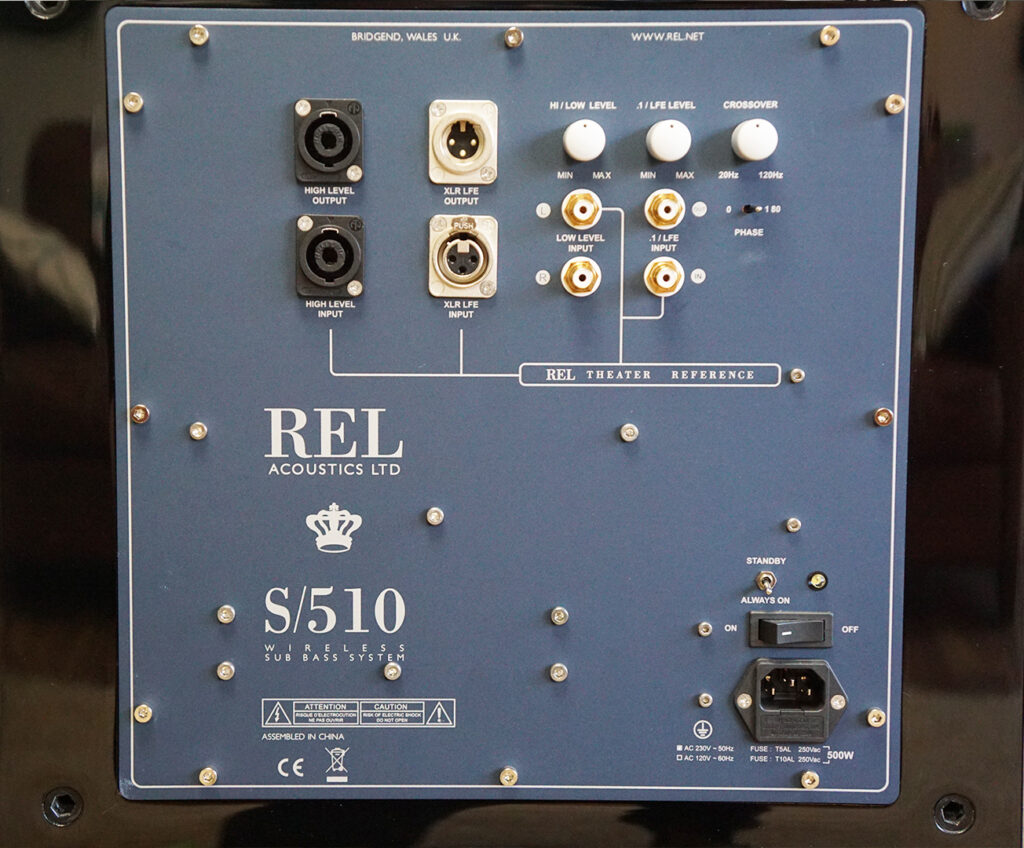
The S/510’s rear panel is clearly laid out, with XLR (balanced), RCA and Speakon connectors plus volume and crossover trim pots
Being a true sub-bass system, REL recommends corner placement behind one of your stereo loudspeakers, firing into a room at an angle towards your listening position, to take full advantage of a room’s tangential (corner to corner) axis, which is typically the longest expanse.
After placement, dial in some bass rich content for your test track and put the crossover dial to around 30Hz. Then slowly turn the hi/low level dial up until you can start to hear the sub’s contribution. Now dial up the crossover until it sounds a little too high before knocking it back. All that’s left to do is fine tune to your personal taste.
There’s also a phase toggle switch between 0/180 degrees, with the best result being the setting that makes the music sound at its fullest (180° in my system).
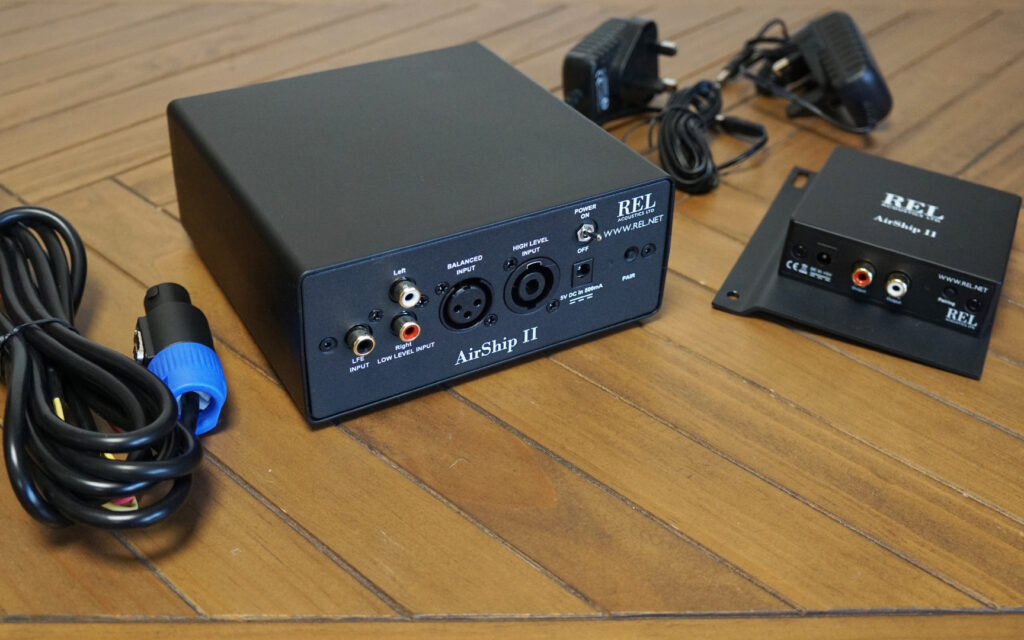
REL’s AirShip II is a £299 add-on that brings wireless connectivity, to give you more positioning flexibility
If having a 10m cable running across your floor isn’t ideal, for £299 extra you can opt for REL’s AirShip II wifi transmitter, which takes the same feeds from your amp’s speaker terminals into a receiver that beams a signal over to a transmitter up to 10m away which neatly bolts to the back of the S/510 and connects via a pair of RCAs.
Performance
With their twin mid/bass drivers reaching down to 32Hz (+/- 3dB), my legacy Dynaudio Focus 260 loudspeakers aren’t low frequency shy be any stretch, and their real world performance in my acoustically treated 6.8 x 4m listening room when driven by Musical Fidelity M6 pre/power amps sounds plentiful, which makes adding a sub into my two channel system all the more intriguing.
Placed in the corner (behind the right channel loudspeaker) affords the REL the best levels of integration, as its guide suggests. A week or so’s fine-tuning across a range of material ensures the S/510’s contribution is exactly where I want it, because I’m not looking for extra bass delivered by the room shaking bucket load, it’s more a case of adding subtle layers of detail and extra impact to my system without overwhelming the music.
Thankfully its clear the S/510 has been engineered for exactly this purpose. Serving up London Grammar’s Big Picture track from their 2017 Truth Is A Beautiful Thing album via Qobuz at 24-bit/44kHz via a Primare NP5 and NP30 streaming package, illustrates what the REL does so well. This isn’t an especially bass heavy track, especially by this band’s standards, and what low notes there are set the scene for the song’s atmospherics and pace. With the REL in the mix these notes are given a little more emphasis, bringing extra depth to the soundstage while helping to power the track’s rhythm. There’s also more more texture to the notes, showcasing the richness of the bass guitar strings, allowing you to hear their pitch variation as each one peaks and dips.

REL’s S/510 reinforcing my Dynaudio Focus 260 loudspeakers
It’s the REL’s ability to bring impact to the mix while still retaining the music’s authenticity that also sets it apart from its rivals. Ondara’s An Alien In Minneapolis at 24/96 for example is all about organic driving rhythms and percussion, without artificial exaggeration. The REL gets involved by adding an extra sprinkle of power to these galloping bass notes with a sense of effortless grip. Any blurring around the edges and this track would quickly sound wallowy and muddy, losing the start/stop nature of each note, yet despite the REL’s generous air moving hardware, it’s clear its internal 500W amp has unwavering control over their excursion and recovery.
As someone who generally favours hardwired connections for the sonic improvements this approach tends to bring, it’s notable I can near no discernible difference when flipping between the standard hardwired connection and the AirShip II transmitter, again showing REL has clearly done its homework by adding convenience without compromising sound quality.
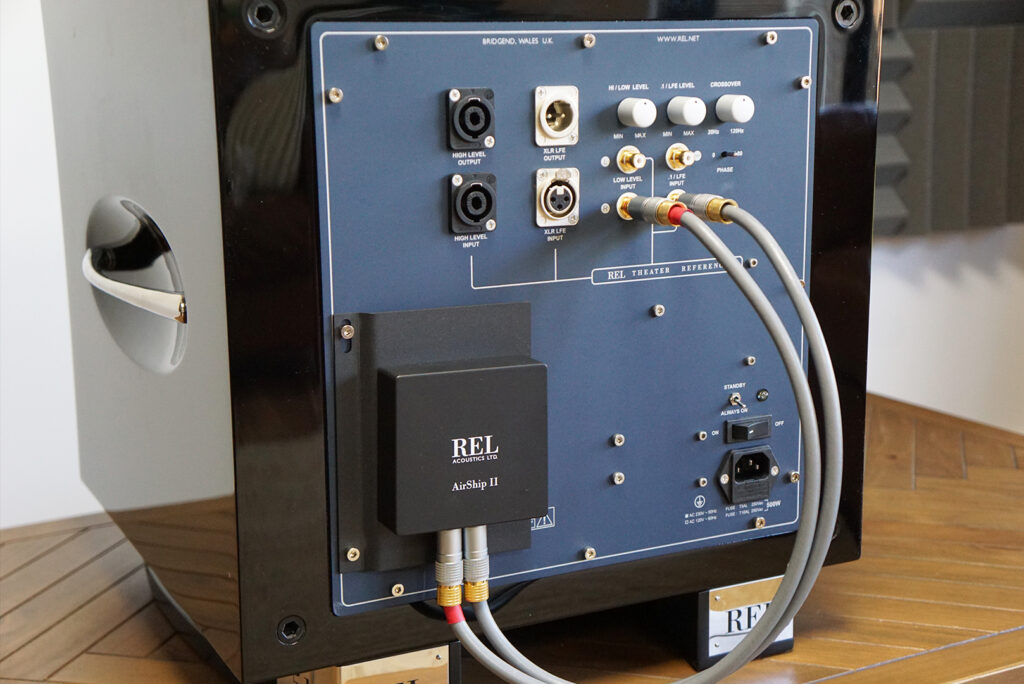
REL’s AirShip II receiver is a worthy add-on that neatly bolts to the S/510’s rear panel
Dialling in Sleaford Mods’ Mork n Mindy featuring Billy Nomates at 24/44 resolution and the driving bassline beamed via the AirShip II sounds just as imposing as it did via a wired connection which teases my curiosity to swap out the Dynaudios for a legacy pair of Avalon’s two-way sealed cabinet Avatar loudspeakers. Via this combo, the way the REL lets the lower notes underpin the track to counteract its throwaway lyrics with the relentless beat is an addictive listen that lets the sinister pounding bassline fully shine through.
Sure the REL can do plaster-cracking chest-thumping levels of subsonics like the best of them, but its real strengths lie in how seamlessly it can integrate within a quality two channel system. You never have the sense its competing with the stereo loudspeakers and that you’re listening to a two way system with added sub, instead it enhances your system to hear it at its best by reinforcing rather than reinventing the music, making it an ideal contributor.
In summary
If you’re looking to dip your toe into subwoofer territory without compromising your carefully put together system’s synergy, then REL’s S/510 is an ideal contender. Thanks to the levels of adjustment if offers with ease, the quality of its delivery and the way it’s been designed with two channel audio at its core, you’re able to integrate it with a range of loudspeakers seamlessly.
It’s relatively compact proportions combined with the quality, rather than volume, of its bass warrant high recommendation without hesitation.



